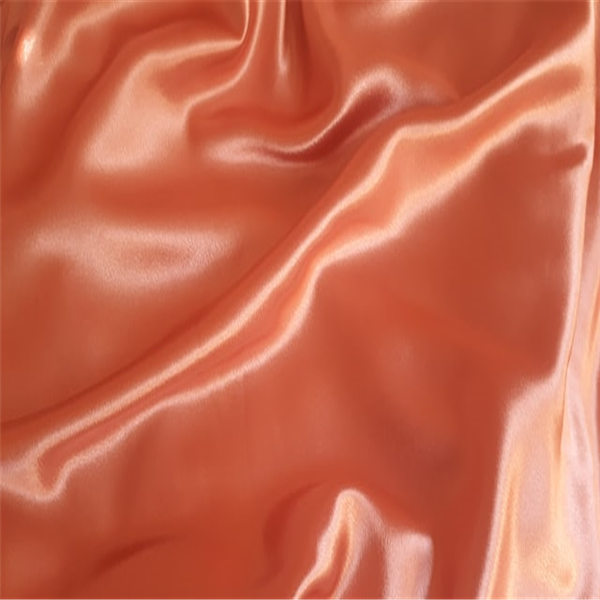Table of Contents
There are many factors affecting the appearance characteristics of satin fabric weave, but the main factors are the twist, twist direction and density of warp and weft yarn.
Influence of yarn twist and twist direction
The twist and twist back of yarn have a refractive effect on light.
Therefore, yarn with large twist will weaken the luster of satin fabric and make it feel hard.
Therefore, the silky feel of satin fabric is weakened.
Therefore, the warp and weft twist of general satin fabric should be small, and the twist direction of warp and weft yarn should be opposite, so as to make the warp and weft twist direction of the woven fabric surface consistent and make the fabric surface glossy.

Influence of warp and weft yarn density
Warp and weft yarn density has a great influence on the appearance of satin fabric.
When weaving warp satin, the higher the warp density, the better its coverage, the individual organization points are not easy to be exposed, and the richer the luster of the fabric surface, the better the warp effect.
Similarly, when weaving weft satin fabric, the weft density is higher, especially when the warp and weft are different colors.
Therefore, when designing the density of satin fabric, for warp satin, the ratio of warp density to weft density should generally be 3:2; For weft satin, the ratio between warp density and weft density is generally 2:3.
Effects of tissue circulation
The warp and weft yarns of the original fabric are staggered only twice in a tissue cycle. Therefore, like the twill fabric, the larger the satin tissue cycle, the softer the feel and lower the strength of the fabric.
Influence of original yarn on fabric style
Due to the high warp density of warp satin, the friction between yarns is large.
Due to the high weft density of weft satin, the number of friction between warp and reed in a certain length is more than that of ordinary fabrics, and the weaving weft beating resistance is large, which makes the tension of warp larger.
Therefore, the strength of warp is required by satin fabrics.
The warp yarn is reflected on the surface of warp satin fabric, while the weft yarn is hidden on the back of the fabric, so the requirement for warp yarn evenness is higher and the requirement for weft yarn evenness is lower.
Similarly, for weft satin fabrics, the requirements for weft evenness are higher and the requirements for warp evenness are lower.
As for Neps and impurities, both warp satin and weft satin are required to be as few as possible.
Because even if it is not exposed on the cloth surface, it will affect the clarity of opening during production and weaving, resulting in weaving defects and broken ends.



